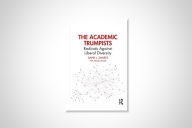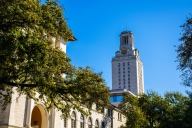You have /5 articles left.
Sign up for a free account or log in.
The number of non-full-time employees on Australian university campuses increased by 17 percent in the latest official count, as institutions hedged their bets against the uncertain student numbers of the demand-driven system.
In 2013, estimated "casuals," as part-time instructors and other employees are called in Australia, rose 17.4 percent to 22,958 full-time-equivalent staff, the biggest increase since 2010, when partial deregulation of student places began to fuel growth. Last year, casuals accounted for more than 18 percent of total staff.
"The massive increase in casual staff certainly reflects the demand-driven system, but it also reflects the changing nature of the work force more generally and the fact that universities are under budgetary pressure," said Universities Australia's chief executive, Belinda Robinson. "And casualization suits a lot of people who take a portfolio approach to their career; they mix and match academic work with work in industry, consulting and so on."
She acknowledged there were significant numbers of casual staff who felt locked out of full-time positions. "The fact is, funding is more uncertain than it has ever been and universities need to be more flexible to the demands of students than they have ever been. It also reflects a broader societal move towards casualization."
Matt McGowan, assistant secretary of the National Tertiary Education Union, said it was now clear that student-staff ratios had doubled over a generation, and casuals carried more than half the load in undergraduate teaching.
"About 8 out of every 10 researchers are employed on short-term contracts, which is making research an unattractive career for our best and brightest graduates," he said. "The real question that the government has to ask is whether this is the way to build a high-quality and sustainable higher education system."
He said the figures showed the effect of the demand-driven system, with 7 out of 10 new positions being casual.
Last year, just over 50 percent of total staff were employed on a continuing basis, down from about 60 percent at the turn of the millennium, while the casual share had risen from about 15 percent in 2000 to 18.7 percent last year.
Carolyn Gregortic, who has had 30 academic jobs since she began her Ph.D. in 2006, knows what it's like to lack job security. Even since she was awarded her doctorate early last year, things haven't improved. At one stage last year, she held eight simultaneous contracts with one university.
"I don't know what I'm doing next week, but I'm very well organized. I have a folder for every job and it's all color-coded," Gregortic laughs from the car park during school pickup.
Gregortic, who started her undergraduate degree as a mature-age student when her daughter was six months old, says she is applying for every permanent position that becomes available at Adelaide's three public universities, but has so far been unsuccessful.
"They say I meet all the selection criteria and am deemed employable, but not successful," she said. "That means they employed someone else."
The 2013 staff figures also show the emergence of a handful of research powerhouse universities in which research-only staff outnumber those in the traditional teaching and research academic role.
The most striking example is the University of Queensland, with 2,071 full-time-equivalent staff dedicated to research alone, compared with 1,265 in traditional academic roles.
"It's absolutely a good indicator of the success of those universities in developing and growing their research activity," said Belinda Probert, an adjunct professor at La Trobe University with a keen interest in academic roles.
Citing tailor-made data from the Education Department, Probert said there had been a pause in the growth of teaching-only roles last year but this was likely to resume as universities updated enterprise bargains.








